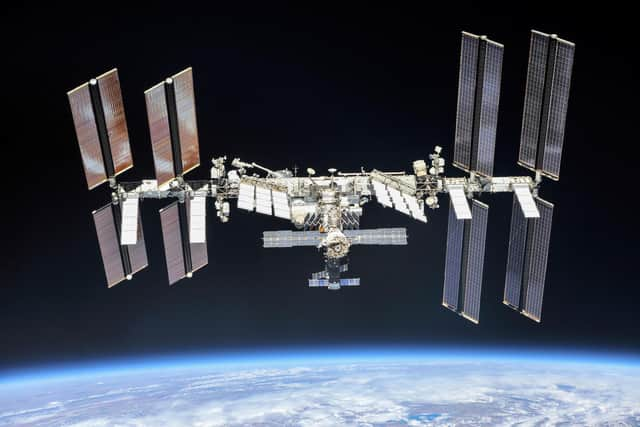International Space Station: 23 years on, what does it do, who was first to dock and when did it launch?
and live on Freeview channel 276
The first astronauts arrived on the International Space Station (ISS) 23 years ago today marking a historic moment of continuous human presence in low-Earth orbit. The first astronauts landed on the ISS after it was launched on 31 October 2000, where the three men, Nasa's Bill Shepherd and Russian cosmonauts Yuri Gidzenko and Sergei Krikale arrived on Soyuz capsule from Kazakhstan, in a mission known as Expedition 1.
The trio would spend 4.5 months (136 days) overseeing perhaps the most critical phase of the ISS activation after training together for four years.
Advertisement
Hide AdAdvertisement
Hide Ad

Shepherd, Gidzenko and Krikalev welcomed three Space Shuttle crews as the ISS gradually grew into the largest inhabited structure ever placed outside of Earth’s atmosphere, and one of two live-in stations around the planet - with the other being China's Tiangong Space Station.
Construction of the ISS cost £75 billion ($100 billion) and began in 1998, with the launch of the first module, named Zarya, on a Russian Proton rocket from Baikonur, and since then 240 astronauts have stayed at the station.
“The day went by really fast,” Shepherd remembered in a NASA interview in 2010. “It was foggy, a kind of dew on all the windows. I waved goodbye to my wife, got on the bus, went down to the Launch Assembly Area and we got our space suits on. Then, out of nowhere, my wife came up when we were suited up and gave me a big hug, which was something you just don’t do in our program.”
He added: “I think Sergei was the first guy in but then there was kind of a very busy scramble to do the initial things that we had to do and, particularly, to find the TV hook-up and the TV cable so that we could give you that downlink. We were really close to the wire getting all that rigged and happy and we almost missed it.”
Advertisement
Hide AdAdvertisement
Hide AdDuring their mission, the crew activated various systems on board the station, unpacked equipment that had been delivered, and hosted three visiting Space Shuttle crews and two uncrewed Russian Progress resupply vehicles.
Now the station is divided into two sections, The station is divided into two sections: the Russian Orbital Segment (ROS) is operated by Russia, while the United States Orbital Segment (USOS) is run by the United States as well as other countries.
The Russian segment has six habitable modules. The US segment includes seven habitable modules, whose support services are distributed 76.6% for Nasa, 12.8% for Jaxa (Japanese Space Agency), 8.3% for ESA (European Space Agency) and 2.3% for CSA (Canadian Space Agency).
The ISS was originally intended to be a laboratory, observatory, and factory while providing transportation, maintenance, and a low Earth orbit staging base for possible future missions to the Moon, Mars, and asteroids but it has been given additional roles commercial, diplomatic, and educational purposes.
Comment Guidelines
National World encourages reader discussion on our stories. User feedback, insights and back-and-forth exchanges add a rich layer of context to reporting. Please review our Community Guidelines before commenting.
